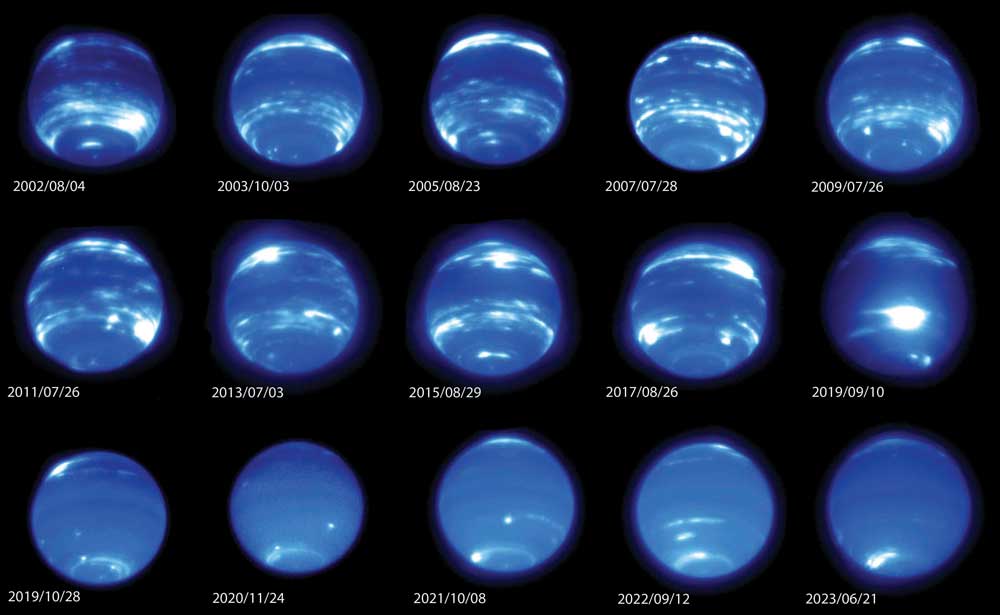Erandi Chavez (now Center for Astrophysics, Harvard & Smithsonian) and others have now found compelling evidence that not only does Neptune brighten soon after the Sun hits its max, but also that the change is due to an uptick in the number of bright, high-altitude clouds.
The researchers collected hundreds of archival near-infrared images taken by Hubble and the Keck and Lick observatories, creating a detailed sequence that reaches back to 1994. At these wavelengths, the clouds reflect sunlight, so the team could use the clouds’ brightness to measure how widespread clouds were, Chavez explains. The images reveal that Neptune was brightest (and therefore cloudiest) in 2002 and 2015 and dimmest in 2007 and 2020 — in fact, Neptune abruptly lost nearly all its clouds beginning in late 2019 and is only slowly recovering now.
The planet’s behavior tracks the 11-year solar cycle, albeit with a 2-year lag: Shortly after solar maximum, Neptune shines brightest; after solar minimum, it’s dimmest.
This correlation may be tied to sunlight’s impact on the molecules in Neptune’s atmosphere, the authors suggest in an upcoming issue of Icarus. The Sun’s total output changes only 0.1% over the course of its magnetic cycle. But its ultraviolet output surges by 40%. Ultraviolet radiation is a powerful chemist: It can break up the abundant methane in Neptune’s skies, enabling various hydrocarbons to form. These molecules might later condense or serve as cloud seeds.
Camille M. Carlisle
Fascinating to see the influence the Sun can have on planets in the system even as far out as Neptune, which receives only 0.1% as much sunlight as the Earth does! It’s a shame we don’t have any missions orbiting the outer giant planets to collect these kind of data – and much more – up close. It would likely yield many astonishing insights into their formation and evolution, which would help us better understand planetary formation in extrasolar systems.

Post a Comment